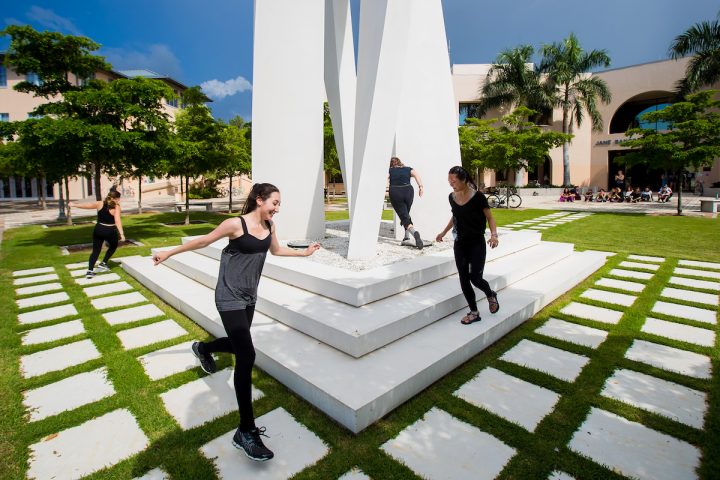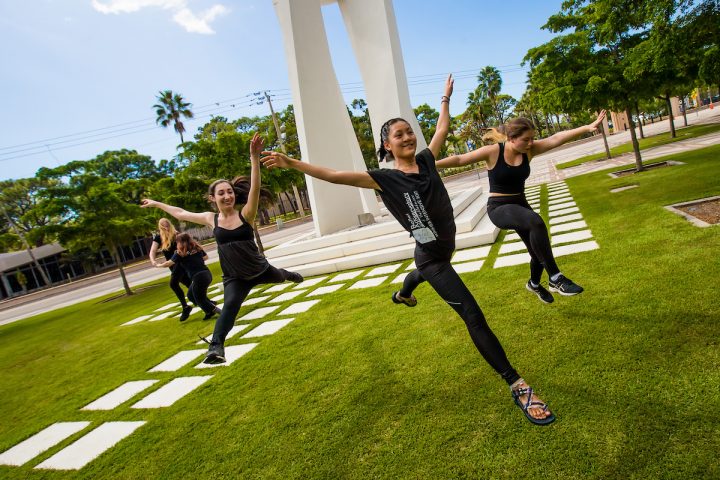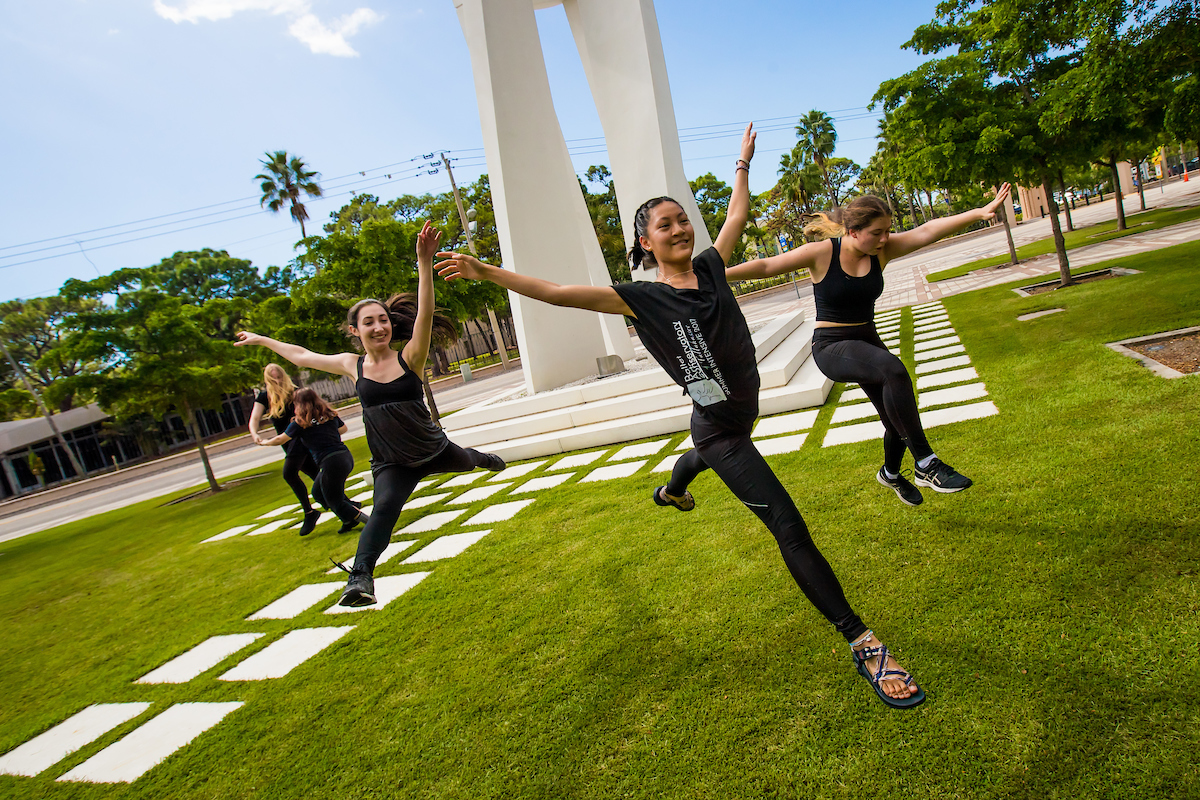
Students dance around the bell tower outside of the Jane Bancroft Cook Library.
Engaging in dance academically can be thought of as an elite or intimidating experience. However, the options at New College—which have multiplied over the years—allow for approaches to movement that are far different from the stereotype of intense competition. Whether you’re looking for a fun stress reliever, an Independent Study Project (ISP) that explores movement or an interdisciplinary Area of Concentration (AOC) that incorporates performance studies, there are resources available.
Leymis Wilmott, dance instructor and artist-in-residence at New College, became affiliated after Professor of Philosophy and Interdisciplinary Programs April Flakne reached out to her around 13 or 14 years ago with the intent of integrating dance on campus. Before that, Dance Collective was the only official dance activity on campus, known then as Dance Tutorial. Student interest continued to grow, so Wilmott was hired as an adjunct and then eventually an instructor.
“We started bringing in a lot of different genres of dance, from Middle Eastern to West African to physically integrated dance to contemporary,” shared Wilmott. “Then I started my company (Sarasota Contemporary Dance), which is a non-profit, and we started to be in residency here at NCF, which provided more classes on campus with company members and opportunities to watch rehearsals of a professional dance company.”
There are three dance classes available through the Humanities Division this fall: Dances in Many Spaces, Urban Dance Technique and Beginning/Intermediate Ballet.
“I think learning about movement is so important!” third-year Sofia Jimenez said in an email interview. “We live in our bodies every day but forget that we can create meaning with our four limbs and pelvis! Dance is everywhere. Tapping into that energy can be invigorating and empowering.”
Jimenez, who has a dance-oriented AOC, stated that she is able to do so through the support of Professor of Sociology Queen Zabriskie, Flakne and Wilmott.
“They’re the holy trinity basically,” Jimenez said. “Each of them specializes in some form of dance. I decided to pursue dance (as an AOC) after my first ISP. I forgot how much I loved the performance process and was uninspired in my natural sciences classes.”
Wilmott is a strong advocate for dance’s ability to strengthen communities and individual wellness. She encourages students to try out at least one course before graduating.
“I wanted students here at New College to know that dance isn’t something to be afraid of,” Wilmott expressed. “That dance is something that will empower them, and be a tool for them to get through school, in the sense of wellness. Also, in knowing how to express. We’re having to write all these papers, but can we communicate with our bodies and share? There are strong connections that happen within these classes, because we’re encouraging you to be vulnerable and also challenging you in a mind-body-spirit way.”

Students dance outside of the Jane Bancroft Cook Library.
Fourth-year Eugenia Titterington is a current Teaching Assistant (TA) for dance and has an AOC in Literature with a slash in Performance Studies. Since the resources have increased in recent years, she now oversees TA work only for Wilmott’s classes.
“When I initially came to New College I thought I would pack away my dancing and take the one dance class that was offered, more as exercise than anything,” Titterington stated. “Then while watching Leymis’ company rehearse, I had this breakthrough moment of looking at these dancers with all different body shapes coming from all different genres of dance working together in a professional company and I thought, ‘Oh! I can do this. At least in some capacity I can still pursue this aspect of dance.’”
“My courses sometimes shift because I’m really interested in the creative process, and in developing movers and thinkers,” Wilmott explained. “I feel that’s where my strength is, to really nurture that in individuals. Then through my company I bring in other teachers that can teach technique and more of the fundamentals of dance.”
According to Titterington, students who feel inexperienced with dance or are intimidated by the notion of a dance class should know that it is a low-risk environment.
“What I love about dance on the New College campus is that almost nobody comes here thinking, ‘I am going to be a professional dancer,’ and therefore it really opens up a place for you to bring in whatever experiences you have into that movement space,” Titterington said.
Wilmott’s desire is for students to leave class feeling empowered, validated and connected to their bodies.
“Everyone has a voice and everyone’s body is made differently and we recognize, acknowledge and encourage that,” Wilmott asserted. “I’m fascinated by how everybody’s body moves differently. That’s intriguing and powerful to me.”


Dancing is one of my favorite past times and I have been searching for a good dance class since some time. Thanks for this article.